August 5-9, 2021 - From Salt Lake City, Utah
It’s not uncommon for a birding tour to have some adversity. Be it the weather, uncooperative birds, traffic noise or any number of other things that can come up. Over the course of the past 5 years our Most Wanted Tours have for the most part run super smoothly. Leading up to our 2nd Most Wanted Tour of 2021 we had our first major itinerary issues in 10 tours. If you read my previous recap about our 2021 Himalayan Snowcock Expedition you find out that at the end of our tour, flash floods caused mudslides that closed Lamoille Canyon in the Ruby Mountains. This canyon is
THE best location in the range to access and see Himalayan Snowcock. While I crossed my fingers that maybe the canyon would open so that we could still make a run at the birds, that was not the case—it remained closed for a month and a half before reopening. With the knowledge that the snowcock was out, one tour member opted to cancel, leaving us with a group of 6 that still wanted to try for everything else. With that in mind I made some quick changes to our itinerary and we got right to birding.

This
Swainson's Hawk eating was an incredible sight!
The tour would start off as usual looking for Black Swift and Flammulated Owl, followed up with a visit to the Sage and Juniper specialists habitats near SLC. But instead of going to Nevada, we stayed in Utah for some high elevation birding that afternoon, before birding the Great Salt Lake on day 3 and continuing to Idaho for Cassia Crossbill. Day 4 was spent birding round Twin Falls and birding a shorebird hotspot we had never visited before, before wrapping things up on day 5 with more birding around Twin Falls and the Great Salt Lake on the way back to the airport. Species wise we actually saw more birds than our normal Most Wanted Tour, but obviously no Snowcock.

The summer of the
Tundra Swan continued in Salt Lake
On August 5th I picked our group up from the airport and headed east to Millcreek Canyon to pick up
Tundra Swan for the last time this summer. The birds that had been present were still there, and actually continued through the writing of this post in January 2022. We got the swans and found a very quiet canyon on this summer afternoon. The breeders had stopped being active and while we managed
Cordilleran Flycatcher and
Warbling Vireo, it was otherwise quiet. A surprise
American Dipper along the creek was a great addition to get things started though!

Swift Watching at Bridal Veil Falls
After dinner we headed south for Black Swift. Our usual location in Salt Lake had been a dud as of late so we took our chances at Bridal Veil Falls where for the first time in my 25+ years birding this Sumer had been reliable for these birds. Tonight, at least
2 Black Swifts were circling overhead, but not nearly as cooperative as some other nights this summer. We also added
Osprey and
Peregrine Falcon here while we waited on the sun to set.
We made our way up in elevation for owls. I warned the group that things had been quite difficult in recent trips here as the birds were already quiet for the season, and we may not have a good opportunity tonight. As it turned out, that was the case. We heard 5
Flammulated Owl audibles and had a bird fly through the headlights, but that was it. Not wanting to be out all night, we called it early, knowing we would have another chance in Idaho.
 Peregrine Falcon
Peregrine Falcon leaving the water hole
Early the next morning we visited the desert an hour outside of Salt Lake City. Again, things were quieter than normal. We did manage to track down a
Gray Vireo and a pari of
Gray Flycatchers. Additionally we had a couple cooperative
Juniper Titmouse,
Woodhouse’s Scrub-Jay, and
Loggerhead Shrike. Recent rains had created a pool where one typically forms each spring. Much to our surprise a
Peregrine Falcon was sitting at the waters edge as we drove past!
 Golden Eagle
Golden Eagle on a power tower

Richard showing off his
Golden Eagles shirt
Having a full day to bird in Utah I took the group through a tour of some agricultural areas. Right away we had a pair of cooperative
Golden Eagles. It was a fitting bird given 2 members of the group worked at Tennessee Tech University—the Golden Eagles! Richard even happened to be wearing a Golden Eagles shirt—a fortuitous coincidence!
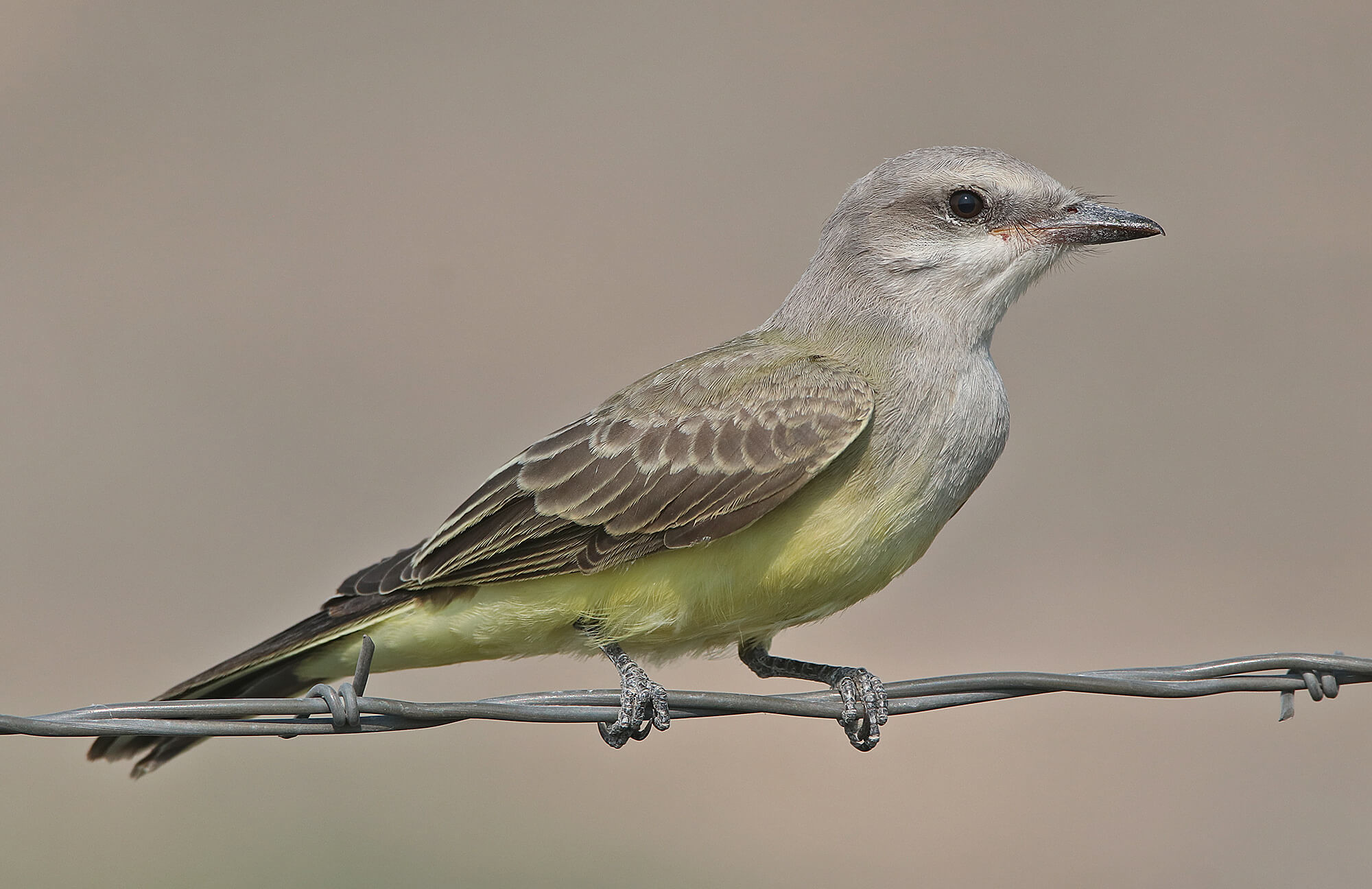 Western Kingbird
Western Kingbird posing next to the road
Our drive through the farm fields turned up good numbers of
Western Kingbird,
Lark Sparrows,
Mountain Bluebirds,
Western Meadowlarks, and
Swainson’s Hawks. Eventually after eating up most of the morning we headed back to Salt Lake for lunch and short afternoon break before heading to higher elevation to escape the heat and see what local montane birds we could find since we wouldn’t be getting to treelike in Nevada!

The unexpected
White-winged Crossbill
The plan was to visit some hummingbird feeders and make our way through a mixed aspen and coniferous forest. As we started walking I heard a whirling trill and immediately perked up, I told the group to come with me, there were
White-winged Crossbills singing ahead! We found the birds quickly and realized there were 5 birds moving about the tops of the trees feasting on the cones. We spend 20 minutes taking photos, making recording and videos and enjoying the great looks at these birds we don’t normally see on tour since they are generally rare in Utah

Young
Orange-crowned Warbler in a baby Aspen
We continued walking after the crossbill show adding
Red Crossbill,
Olive-sided Flycatcher, and a cooperative
Red-named Sapsucker. The birding was pretty good despite being quieter than usual. One interesting thing was the lack of hummingbirds. The feeders we visit had a lone
Rufous Hummingbird visiting and nothing else! Super weird for this time of year

Young
Warbling Vireo waiting for its feeding
The rest of our loop turned up a lot of young birds. We saw several young
Orange-crowned Warblers as well a few
Warbling Vireos, including one bird interacting with a parent that we were able to watch for several minutes. Cooperative
Hermit Thrush,
Dark-eyed Junco,
Lincoln’s Sparrow, and
Mountain Chickadee all made for a good afternoon of birding. With an early and long day ahead we called it a night.

Stunning
America Bison at Antelope Island
Our third morning started early to put us on Antelope Island on the Great Salt Lake at Sunrise. We proceeded to the spot we’d had luck with
Chukar all year and in no time found a group of 8. The key as with other successful outings this year had been to be there at first light. Our afternoon and evening visits had all come up empty. Besides birds we had an incredibly photogenic American Bison!
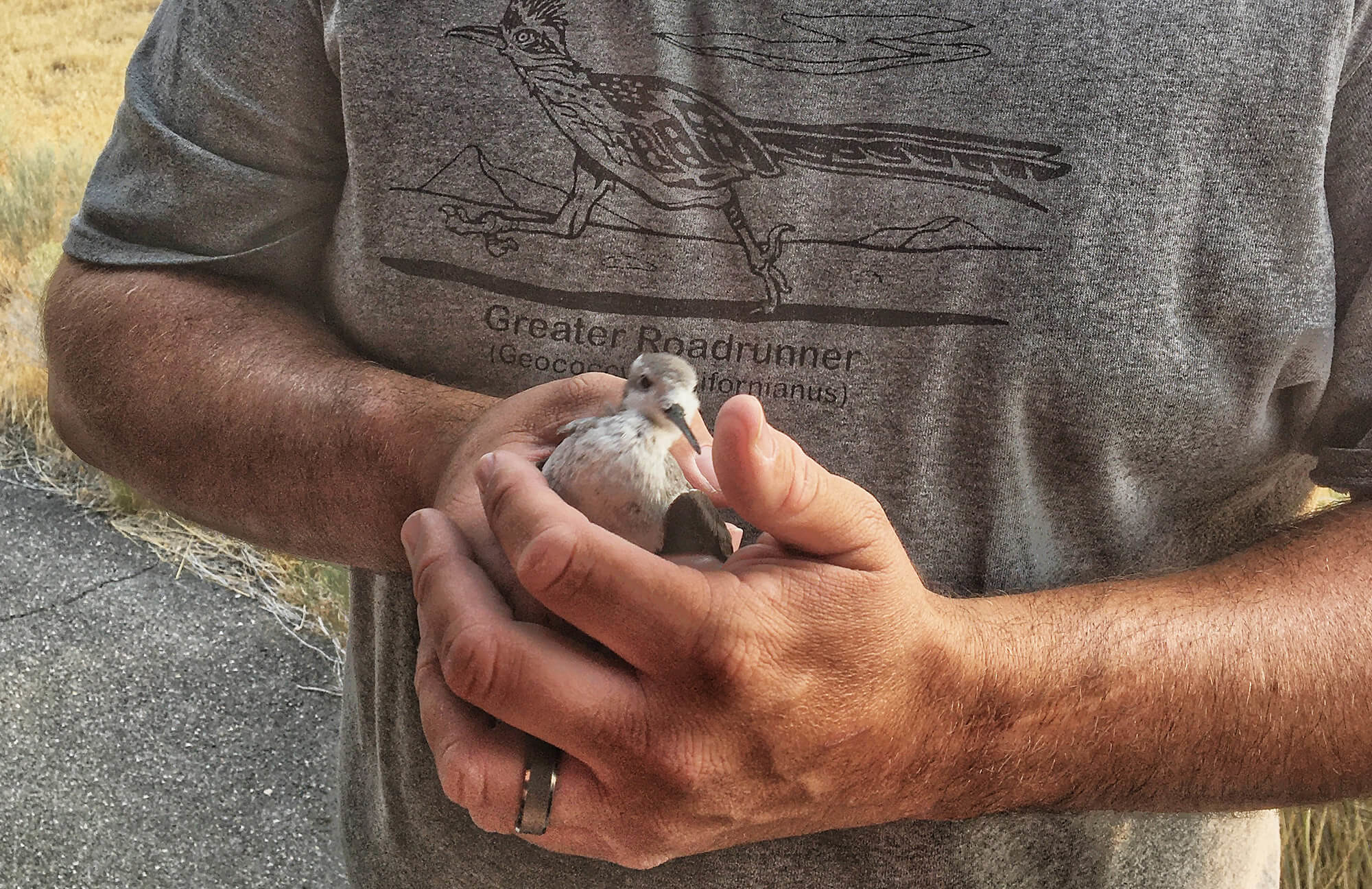 Wilson's Phalarope
Wilson's Phalarope relocation
Aside from the Chukar we found our usual Rock Wren, and a single Burrowing Owl. There were a whopping
8 Sage Thrashers out and about at various stops as well. As we were driving our loop around the island we spotted a
Wilson’s Phalarope in the road. It appears to have a slightly doomed wing. I got out and approached and was able to corral the bird. We transported ti to the causeway and let it go at the water edge. At least here it had a chance to find food before it was likely predated or run over on the road.
We hurried back to the island and picked up
Great Horned Owl before finding a big family group of
Burrowing Owls. We spent some time enjoying watching the owls as they were quite cooperative and close for great views.
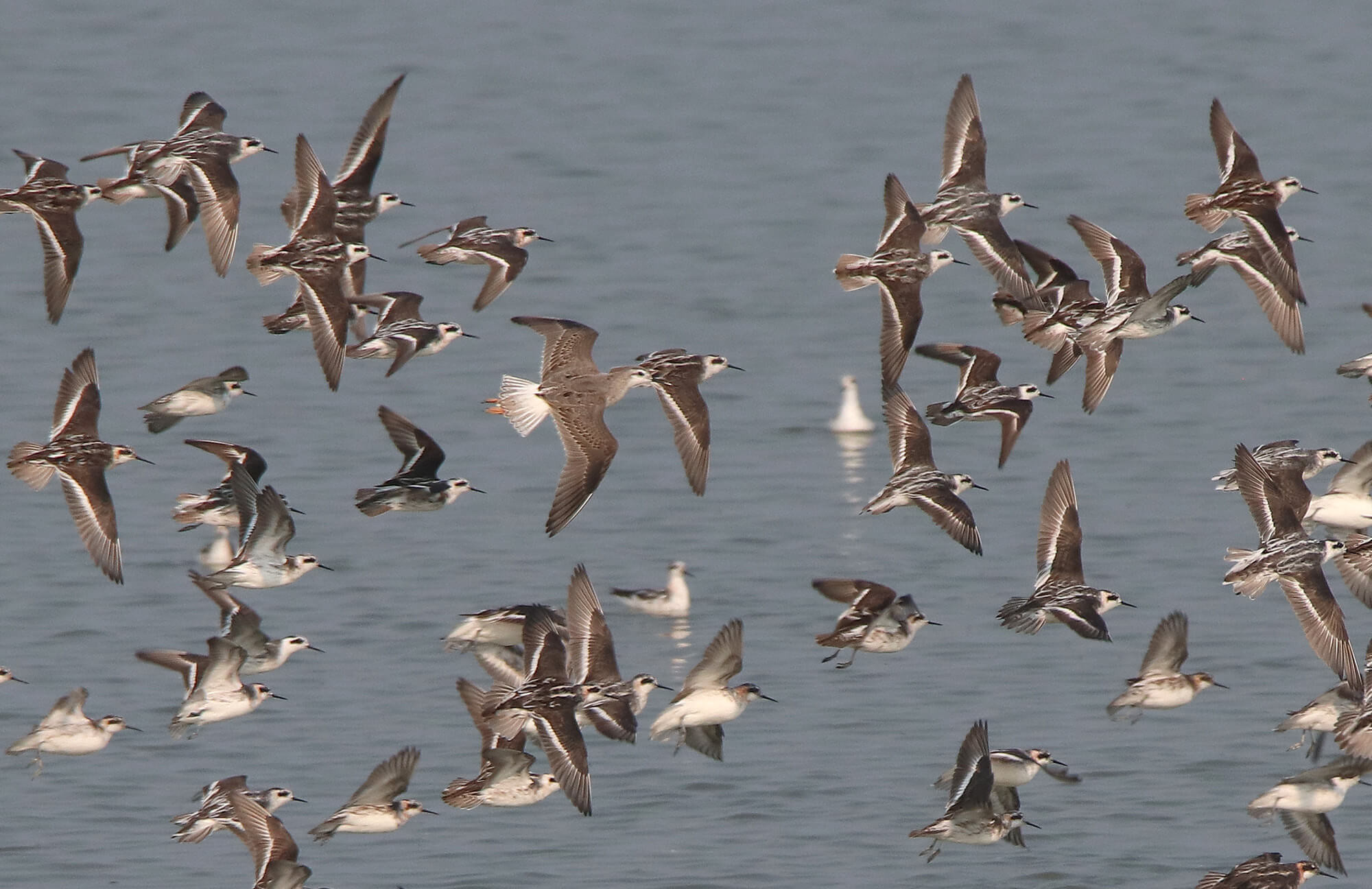 Red-necked Phalarope
Red-necked Phalarope flock... with 1
Wilson's Phalarope
Back on the causeway and making our way out of the park we encounter good numbers of phalarope. Roughly
10,000 Wilson’s Phalarope and
40,000 Red-necked Phalarope in tight flocks on the shallow water. Picking through the shorebirds we found
5 Wester Sandpiper, a single
Baird’s Sandpiper, a
Lesser Yellowlegs,
2 Spotted Sandpipers,
1 Long-billed Dowitcher,
2 Long-billed Curlew, and a handful of
Willet. It wasn’t the most diverse shorebird list, but a good start. We also had nice looks at a few of the
5,000 Eared Grebe present.

A lovely
Clark's Grebe
With the entire day ahead of us we headed to Bear River Migratory Bird Refuge and drove the auto tour loop. The refuge was in a sad state, as the drought had dried up most of the ponds and canals. In just over an hour we still managed around 40 species with great looks ad huge numbers of
Western Grebe and
Clark’s Grebe on the main impoundment which still had water.
Various waterfowl, waders, and divers were all present here including
American White Pelican,
White-faced Ibis, and
Caspian Tern. For me, the highlight was a pari of
Solitary Sandpiper. We see these every once on a while on our Most Wanted Tours as they migrate south for the fall, but by no means is it expected on most tours. We wrapped things up at the refuge, grabbed lunch and hit the road to Idaho. We checked into our hotel in late afternoon and took a short break before dinner.
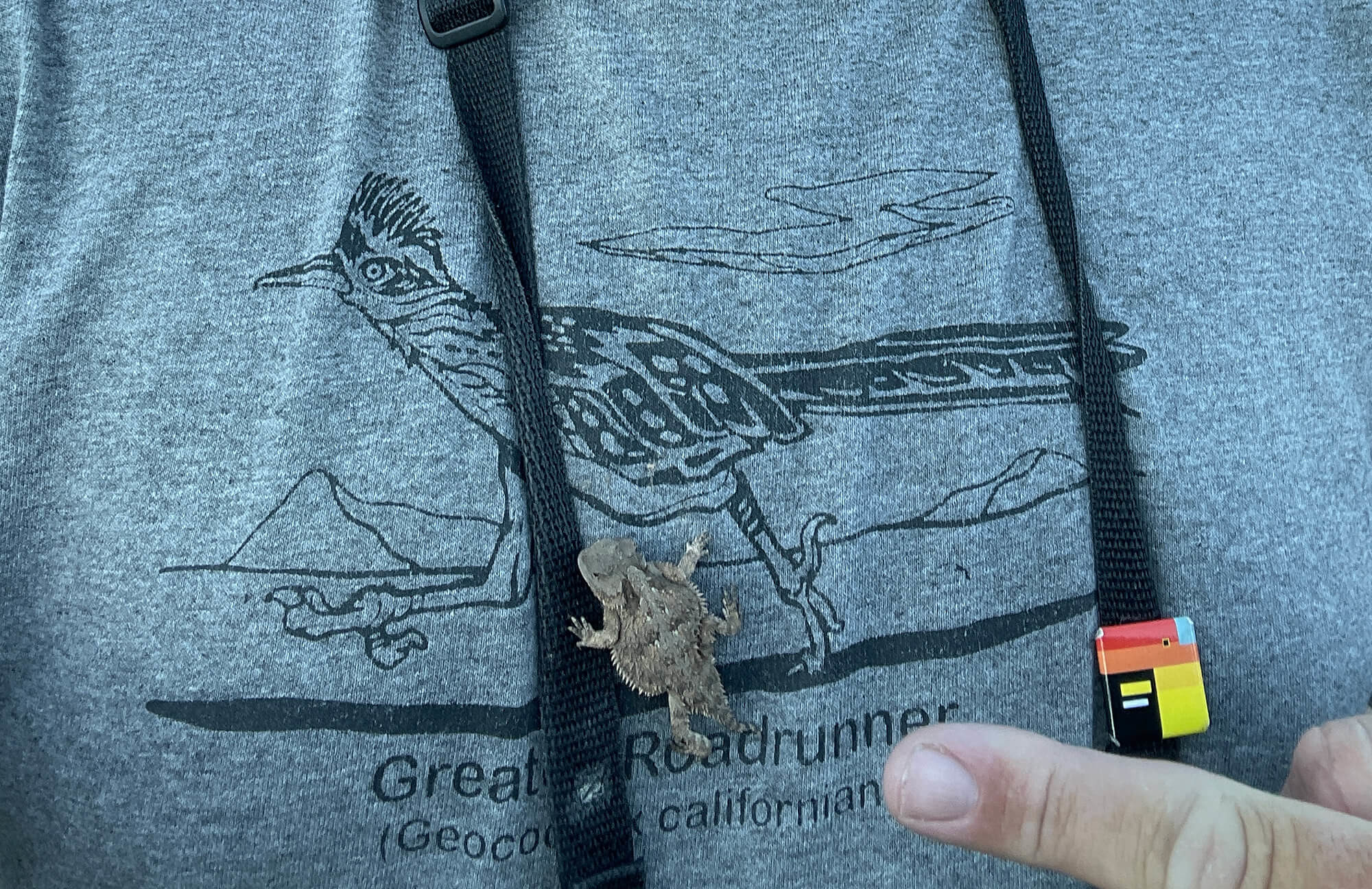
Probably a Pygmy
Short-horned Lizard
After grabbing dinner we headed towards the South Hills. The plan was to maybe get an evening look at Cassia Crossbill, and hopefully track down a cooperative Flammulated Owl after dark. We arrived at Diamondfield Jack Campground at 7:00 pm and spent the better part of the next 2 hours wandering the trails through the forest. We hiked to a Ridgeline I hadn’t visited before, and the Tennessee Tech duo uncovered a Horned Lizard under a rock. After some discussion and consulting the interwebs we settled on
Pygmy Short-horned Lizard. A first on a tour!

Some species of
"Evening Bat" in the South Hills
We picked up many of the typical species here like
Western Tanager,
Brown Creeper,
Hairy Woodpecker, and
Violet-green Swallow. And while we had short looks and flyover
Cassia Crossbill calling, we would return the next day for better views. As we got back to the parking area, several
Common Nighthawk were flying around as well as a number of large bats. Based on the photos I took I'm still not sure of the species, though I suspect they were Big Brown Myotis.

Stunning views of a
Flammulated Owl
As darkness settled I got a little concerned. There was some sort of concert happening at Magic Mountain Ski Area and the speakers could be heard for miles away—would this undo our owling??? My fears quickly evaporated as the road I had been using all summer here worked wonders as we tracked down 2
Flammulated Owls. The second bird being nothing less than a perfect subject to watch and photograph! By 11:00 pm we were back at the hotel for the night!
 Barn Owl
Barn Owl to start the morning off
We kicked off the day visiting the agricultural areas south of town. Despite spending almost 2 hours on the backroads here we had no luck with Gray Partridge—a common theme for the summer of 2021 where we were 3 for 6 here. Prior to this year we had gotten this species on every tour to Idaho with the exception of our first trip when it wasn’t a focus. As a consolation we had an incredible
12 Barn Owls at one of our regular stakeouts..

Gorgeous
Great Horned Owl
There was also a Great Horned Owl hanging out in the same patch of trees and nearby
3 Burrowing Owls were at one of their usual burrows. Several of our Southern Idaho targets were present in good numbers with
30 Western Meadowlark,
20 Swainson’s Hawks, and
5 Northern Harrier. We also tracked down
Sage Thrasher,
Vesper Sparrow,
Loggerhead Shrike, and a single
Brewer’s Sparrow. Incredible numbers of doves were present near the municipal airport where we tallied
28 Rock Pigeon,
14 Eurasian Collared-Dove, and
125 Mourning Dove!!!
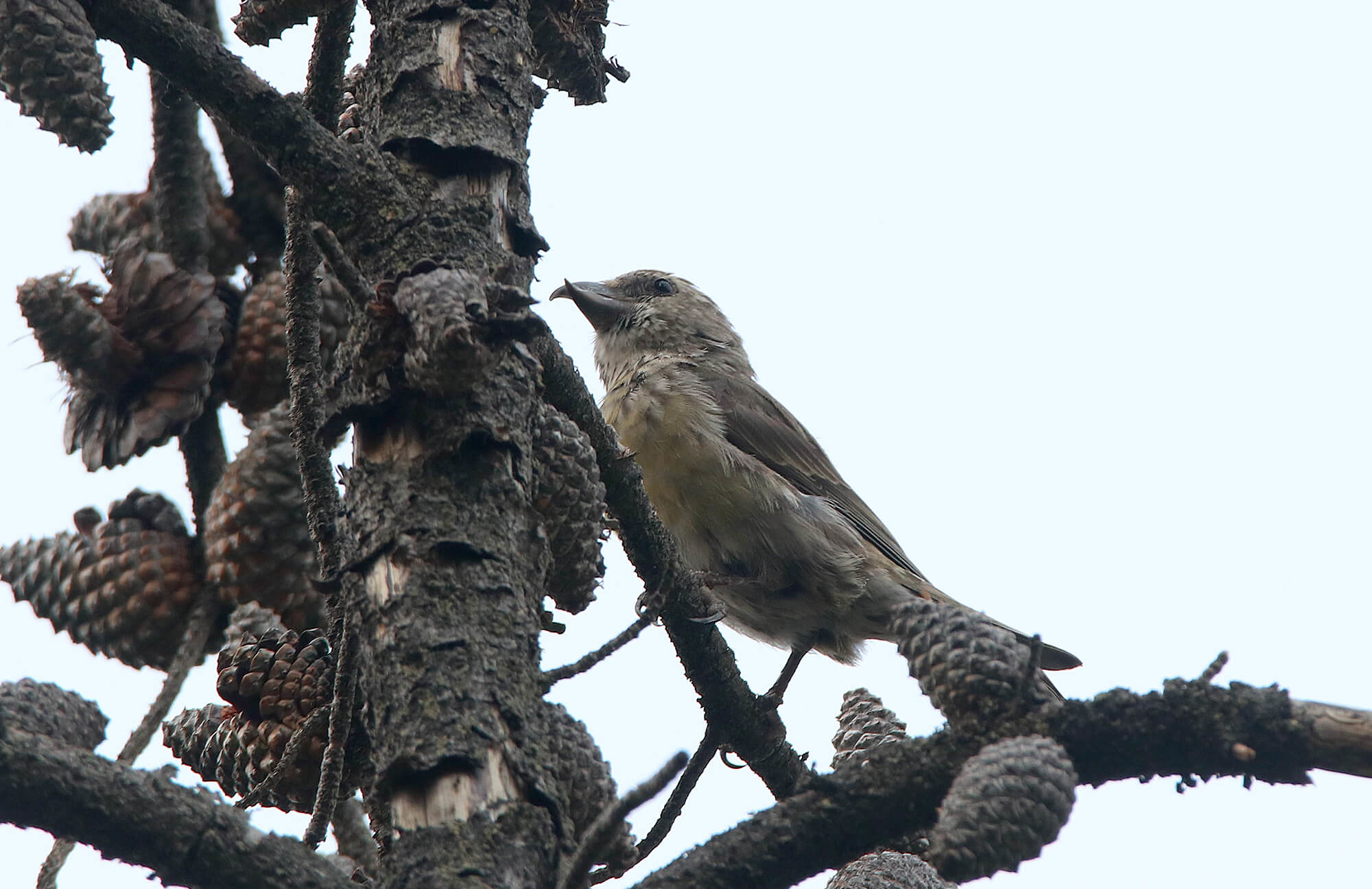
One of the cooperative
Cassia Crossbills
We finally made our way up into the South Hills again, this time to focus on finding the endemic
Cassia Crossbill. Walking the same trail as the previous day our luck was much improved when a flock of birds flying over calling had a few individuals come into trees and spend a decent amount of time perched out in the open for great views and photographs. We were able to put scopes on the birds in several spots allowing lots of time to study and enjoy this interesting species.

Crossbill Success!
We ventured across the range, finding
4 Lewis’s Woodpeckers along the Burn trail. This location was incredibly quiet. With the early spring and hot summer we had the common theme at the end of July and beginning of August was that most of the breeders were quiet, and many species were much harder to track down. Continuing towards Brockman’s we added
Mountain Bluebird,
Cedar Waxwing, and
American Kestrel for the day.

A very early migrant
Merlin—a first on this tour.
As we pulled into the area near the feeders there was a small raptor perched on a dead snag in the distance. I dismissed the bird as a Sharp-shinned Hawk initially. Luckily the bird took flight and Lyle (form Michigan), said it looks like a
Merlin. Sure enough as soon as the bird started sprinting it was apparent that it was indeed a Merlin! An early migrant and firs for this tour!

A young
Calliope Hummingbird
Brockman’s was nothing less than a zoo on this morning. This summer that had also been a common and unusual theme—one reason we rearranged our tour dates for 2022, to try and make sure we visited any day but a weekend! We drove to the secondary feeder site and ran into several local birders. We spent the first bit here and then once the crowds moved on headed to the main feeders. The entire production was fabulous as usual. We estimated around
20 Black-chinned Hummingbirds were running the show, while a pair of young
Calliope Hummingbirds joined the handful of
Rufous Hummingbirds and
Broad-tailed Hummingbirds also present.
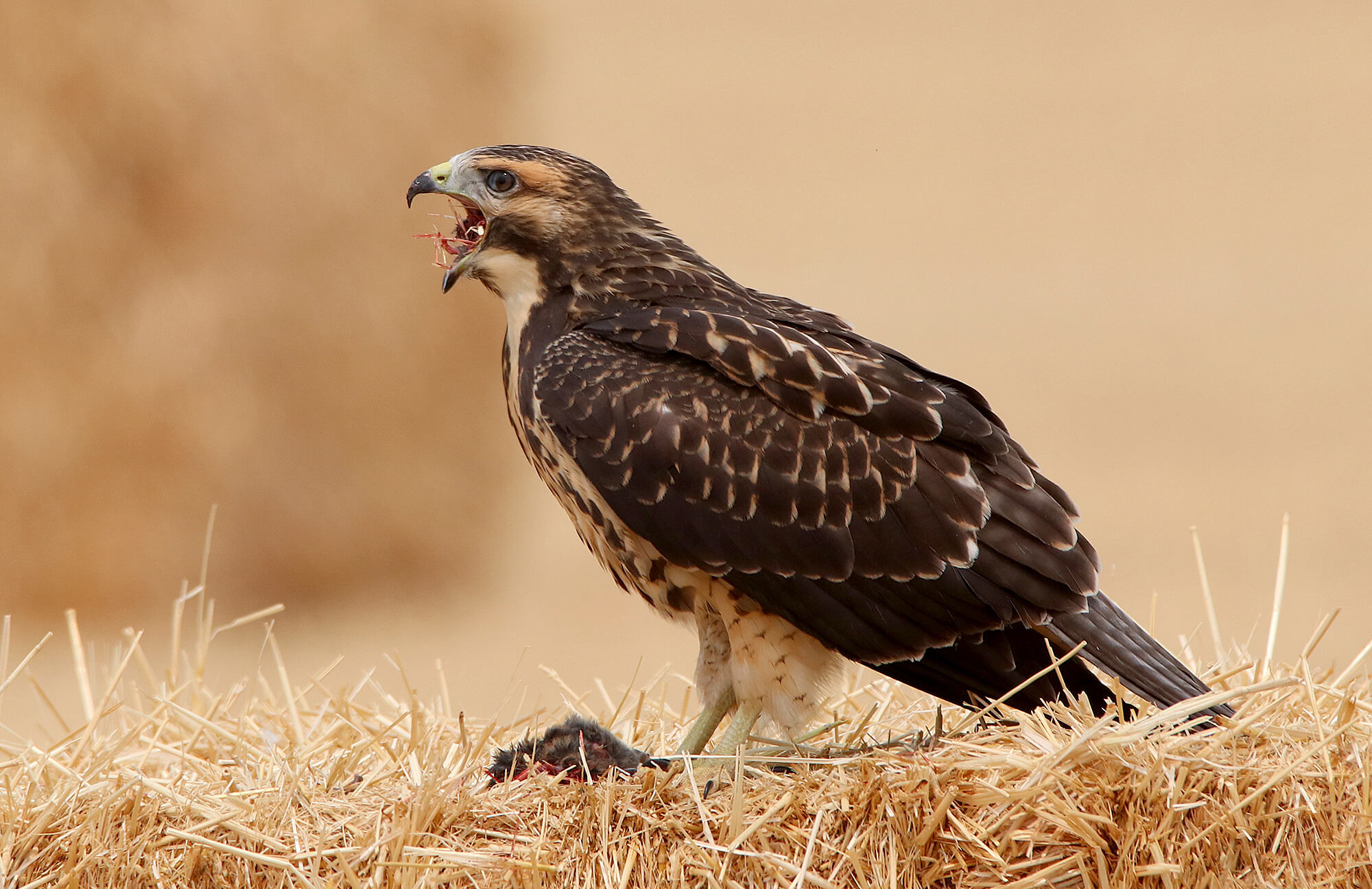
Mmmmm! Lunch! This
Swainson's Hawk was enjoying it!
After a picnic lunch, we headed back towards Twin Falls, again driving the southern fields hoping for some Gray Partridge luck. While that didn’t happen we found a hatch year
Swainson’s Hawk at a buffet on a hay bale. I am 90% sure this was the
same young bird from our Georgia Audubon Tour earlier a few weeks earlier, sticking really close to its nest. We watched as the young bird shredded its prey, and then took the fleshy parts and devoured them. It was both disgusting and incredible to watch and provided an awesome photo op!

Digiscoped
Baird's Sandpiper in Idaho
We took an afternoon break before driving out towards the town of Hansen and a flurry of eBird pins on what appeared to be a couple of holding ponds on a a farm. Sure enough we found two ponds with extremely low water, covered in waterfowl and shorebirds. Despite years of tours here during the summer shorebirds and other waterbirds were always a hard get—but not today. We spent an hour scanning to find anything out of the ordinary. 13 species of shorebird were highlighted by
1 Semipalmated Sandpiper,
3 Baird’s Sandpiper,
175 Western Sandpiper, both
Wilson’s Phalarope and
Red-necked Phalarope, and both
Greater Yellowlegs and
Lesser Yellowlegs.
Waterfowl wise we saw huge numbers of
Cinnamon Teal, and various counts of
Northern Shoveler,
Northern Pintail,
Green-winged Teal,
Redhead,
Lesser Scaup, and several other species. Along the power lines around the ponds were
750 Bank Swallow with
Northern Rough-winged Swallow,
Tree Swallow,
Barn Swallow, and
Cliff Swallow mixed in. We had a 6-species sweep for Idaho all in the same day. These ponds were a major highlight and never on my radar due to their location and the general timing of my tours. I think in the future we might have to take some time to continue to check them out though!
In the evening we decided to try a local park for screech-owl. Surprisingly, the water and traffic noise made it difficult—and the mosquitoes made it almost unbearable to be outside. We did add a
Canyon Wren just before dark, but struck out on owls!

One last group photo at the Cassia County line
Our last morning started off like the previous day in the southern fields. Not much changes overnight as we found many of the same species, but none of the game birds we hoped to target. We checked out of the hotel and made our way over to Shoshone Falls Park where the theme of “quiet” continued. We did track down a couple of
California Quail, one
Lazuli Bunting, and a single
Yellow-breast Chat. We also had both
Canyon Wren and
Rock Wren before wrapping things up and heading back towards Utah. Quick stops in Idaho grand
Great-tailed Grackle in Burley, and an
Osprey in Idaho along the Snake River.
 Sora
Sora peeking back at us
Back in Utah mid-afternoon we headed to Farmington Bay WMA to see if there was anything else new we could add before wrapping things up. We added
Neotropic Cormorant,
Wood Duck,
Sora, and
Virginia Rail for the week, and had a decent number of birds despite the hot August day. And just like that our 10th Most anted Tour came to an end. Despite the disappointment about being able to go to Nevada and track down Himalayan Snowcock, we made the best of the week and still tallied 148 species. A very good number for 4 days of birding here in late July or early August. I offered for the entire group to join me the following summer on one of our future tours as tagalongs so they have an opportunity to see their lifer snowcock. We’ll be seeing them this July and August when we are back at it!
Photos from this Tour:
Birds Seen on this Tour:
Labels: Calliope Hummingbird, Cassia Crossbill, Flammulated Owl, hawks, Idaho, owls, phalarope, utah, White-winged Crossbill




























Post a Comment